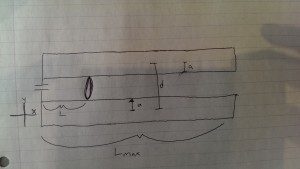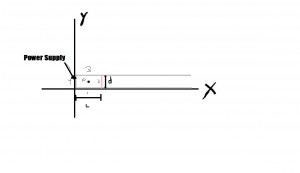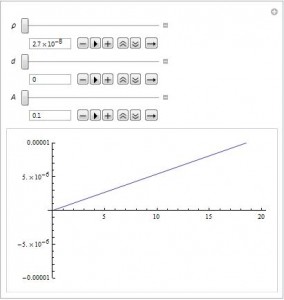I appreciate astronomy as much as any Vassar physics student, and I think that your original goals were pretty comprehensive and distinct. The kepler laws are a pretty well-documented and studied set of physics, and it seems a challenging and rewarding problem to solve them numerically, especially since a few Vassar classes (PHYS 210, Astro 230) focus on solving them analytically. The analytical solutions, if I am remembering correctly, were pretty taxing and so using a numerical approximation seems a good way to solve a pretty complex problem.
Project Plan:
It seems to me as though you guys had a pretty firm grasp on the kinds of concepts and equations that would be necessary to solve these problems. I do have a couple questions:
- Did you consider simulating the effects of tidal forces or at least just the magnitudes of tidal forces? Especially in the moon/earth/sun system, tidal forces seem to be a pretty central piece of physics. I think it would have been cool to see these forces in the original two-body program and then even cooler to note how the moon, with a relatively small mass (at least compared to the sun), so intensely affects the tidal forces on the Earth.
- I’m not sure why you chose to try to solve the three-body system before solving the system with the two large masses. Having written the original program, would it not have been trivial (or at least logical) to then just increase the mass of the Earth and give the sun some sort of initial velocity?
Preliminary Results:
The euler-chromer method seems to me to be a pretty effective way of solving these differential equations. I like the visuals that you’ve provided to display the results, especially the juxtaposition of the radius plot next to the more visually gratifying plot of the Earth’s actual motion. It is really cool to see this radius plot side by side, and an effective way to verify that your solution seems to be correct. Once again, a couple more questions:
- You note that you intentionally left out the masses of the sun and earth as the sun’s mass is so large in comparison. Similarly, you’ve also assumed that the sun does not move. These seem like pretty crucial assumptions, and I think it would have been good to show that your solution is still correct and that the sun is only moving a little bit when it is allowed to move. I say this also because as I noted before, the final goal for your project was to create a program that might have simulated two massive co-orbiting bodies. Wouldn’t you have had to write an expression for masses and an initial velocity anyway? Seems to me like this could have been a pretty key step in the grand scheme of your project.
- Did you consider a different method besides euler chromer? Since the euler chromer only evaluates derivatives at the beginning of an interval, could this have had some effect on the results you were getting?
Final Results:
I give you props for solving the system using an analytical method; it seems that you’ve shown a situation where the numerical approximation of the motion might actually be more complex. I think you also did a great job problem-solving and exploring possible sources of error, it seems like your search was really comprehensive and that you checked every piece of your code. One comment:
- Why did you choose to use the “straight-line” model when simulating just the Earth and the Moon? Does this really add anything to solving the problem? Isn’t the Earth and Moon system practically identical to the Earth and Sun system? Once again, I feel like this is where not using mass and initial velocity in the initial problem may have come back to hurt you. That seems to me like a pretty crucial step that could have affected the whole project,
Conclusion:
I like your discussion of the methods you used. This, to me is the most important part of physics, evaluating whether or not what you have done is useful or correct. Since the whole point of a numerical approximation is to lessen the taxing nature of the analytical solution, it is especially important to identify problems for which it is not effective. That being said, why did you abandon the third part of your project? Instead of spending so much time trying to fix the second part, might it not have been better to see if the Euler-Chromer method is effective when evaluating that kind of problem? Overall, really good job and good physics.














